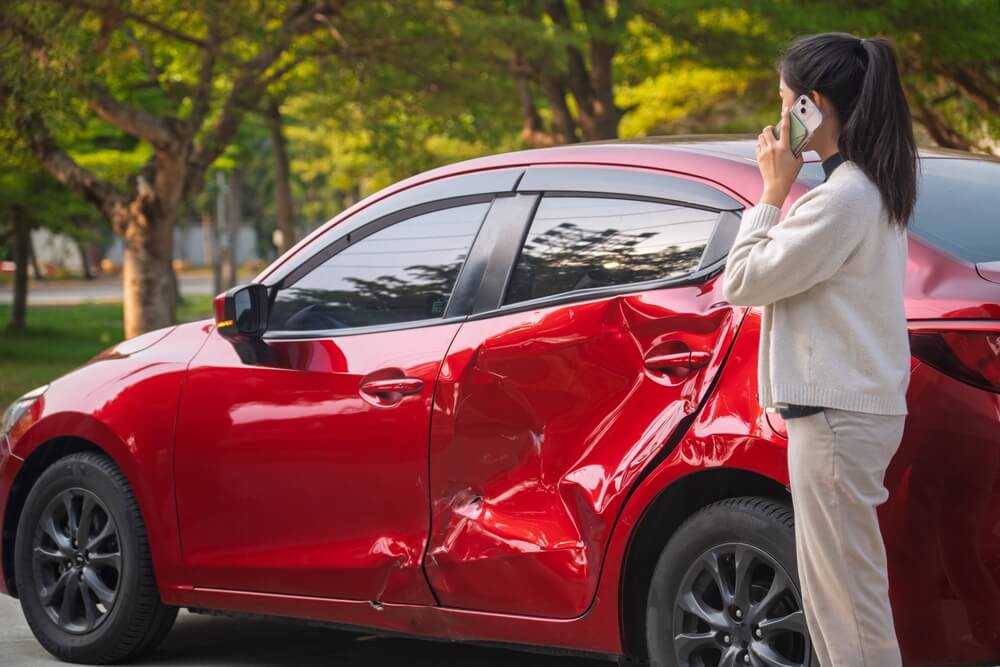
If you are not redirected within 30 seconds, please click here to continue.
Samedi: 10h – 16h HAE

If you are not redirected within 30 seconds, please click here to continue.
If you are not redirected within 30 seconds, please click here to continue.
New Car Technology Aims to Put the Brakes on Distracted Driving

Table of Contents
It might surprise you to know that replying to a text message takes an average of 33.6 seconds. According to research from CAA, in that amount of time if you’re driving on a residential road, you may have missed 85 parked cars, 36 houses, or five intersections. As you know, texting and driving continues to be a serious problem especially since it requires visual, manual and cognitive attention from the driver. More importantly, CAA reports that as many as eight out of 10 collisions are caused by driver distractions.
Automakers and parts manufacturers are doing their share to find solutions. Autonomous emergency braking (AEB) systems have already proven to be successful in Europe and figures from the European Commission indicate it will reduce accidents by up to 27% and save up to 8,000 lives a year. AEB technology combines sensors with stereo cameras, radar and lidar systems, which can detect if the car in front is slowing down or braking sharply. If a driver is distracted and doesn't take appropriate action, an installed AEB system will automatically apply the car's brakes to avoid a collision or at least lessen the impact.
The AEB system is installed in about 20% of new vehicles in Europe and insurance companies are referring to it as the "next seatbelt" especially since around 25% of insurance claims involve front-to-rear crashes. In the UK, the Association of British Insurers (ABI) is pushing for incentives for the purchase of vehicles fitted with AEB and reduced insurance premiums, which have already been implemented by several agencies.
Although there are some insurance companies and road safety advocates who'd like to see the AEB technology become mandatory for cars, the Department for Transport in the UK has no plans to make the system a legal requirement. The cost of these systems is anywhere from a few hundred dollars to thousands, which is part of the reason it hasn't caught on in North America, where it is mainly an option on more luxury vehicles.
Perhaps Volvo may be able to apply safety technology for distracted drivers at a more affordable price. Volvo currently has sensors in research and development, which can be placed on a car's dashboard to monitor details such as which direction the driver is looking, how open their eyes are, as well as their head position and angle. The sensors, which work with small LEDs that emit infrared light, are being tested in vehicles now to see how well they operate with other safety systems and being monitored to see how well a car will stay in its lane while keeping its distance from traffic in front, if a driver was not paying attention.
Volvo notes that the sensor works like a camera and takes pictures, but doesn’t store them, but rather analyzes the information to see if a driver is distracted, in which case warnings and safety systems can be activated. Even if the driver is alert, the sensor will be able to detect what he/she is looking at on the road, and aim the headlights toward it for better visibility.
Volvo doesn't expect that technology to be fully developed until the next few years. In the meantime, however, some mobile applications might be able to keep distracted drivers in check. Free for Blackberry, iPhone and Android phones, the DriveSafe.ly application will read out your texts and emails, and even allow you to record an automated response telling others you're driving right now and can't respond.
Another excellent app, SafeCell, is available for iPhone and Android, and blocks phone, texting and email capabilities when the user is driving. It will also notify callers when the user is behind the wheel.
Latest Articles
Get money-saving tips in your inbox.
Stay on top of personal finance tips from our money experts!










